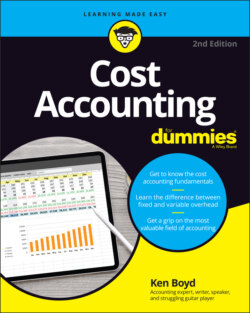Читать книгу Cost Accounting For Dummies - Kenneth W. Boyd - Страница 87
Using CVP tools
ОглавлениеTo bring the new product discussion in for a landing, I’ll use some of the cost accounting tools discussed earlier in the chapter.
Here’s a review of the Thunder Proof jacket forecast for year one:
Material costs total $65 per jacket, and you’ll spend $30 per jacket on labor costs.
Overhead costs add up to $12 per jacket.
The sale price is $130 per unit, and you expect to sell 10,000 jackets in year one.
In order to use some of the formulas explained in this chapter, you need to analyze the costs differently. It’s not unusual for a business owner to start by defining costs per unit, but changing the analysis is more useful.
Rather than working with costs per jacket, you need to assign costs as either fixed or variable. Head over to Chapter 2 to learn about the differences between fixed costs, variable costs, direct costs, and indirect (overhead) costs.
You dig into cost information, assign costs, and plug the results into the breakeven formula:
Profit ($0) = sales – variable costs – fixed costs
Profit ($0) = (units × $130) – (units × $85) – $300,000
Solve for the number of units:
$300,000 = units × $45
$300,000 / $45 = units
6,667 = units
You need to sell 6,667 units, in order to cover all your costs and breakeven. Fortunately, your market research estimates 10,000 jackets sold in year one, which is above breakeven. Use the breakeven formula, and solve for profit:
Profit = $130 × (10,000) – $85 × (10,000) – $300,000
Profit = $1,300,000 – $850,000 – $300,000
Profit = $150,000
If you hit your sales goal of 10,000 jackets, you’ll earn $150,000 profit in year one. You can use this analysis for any new product idea, and decide if the required investment will generate a reasonable profit.
